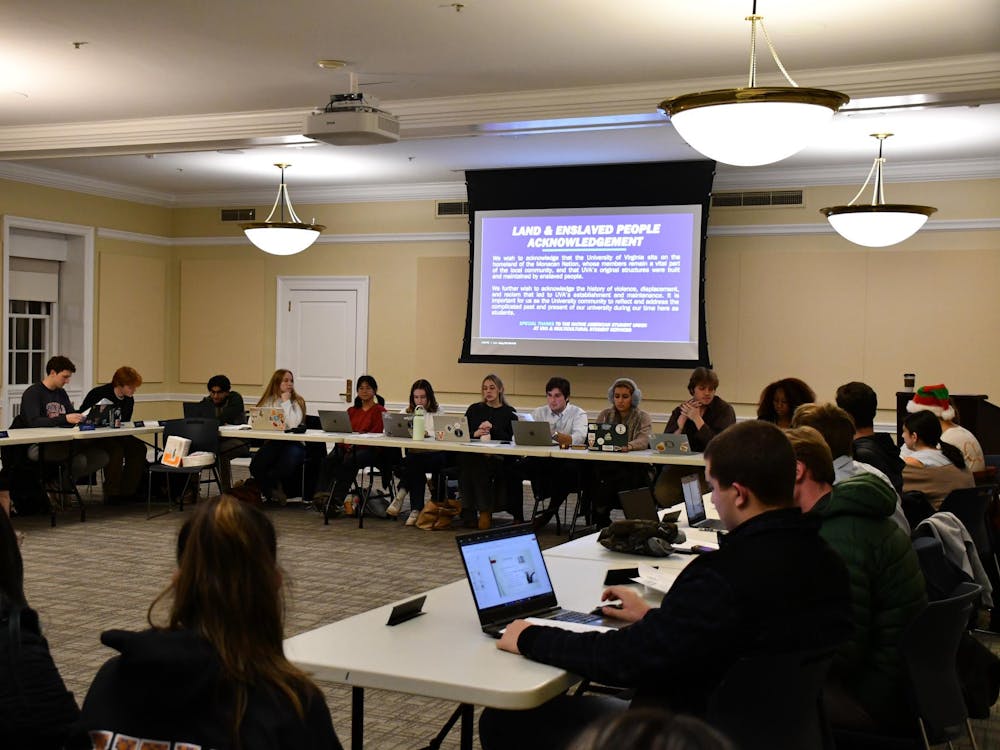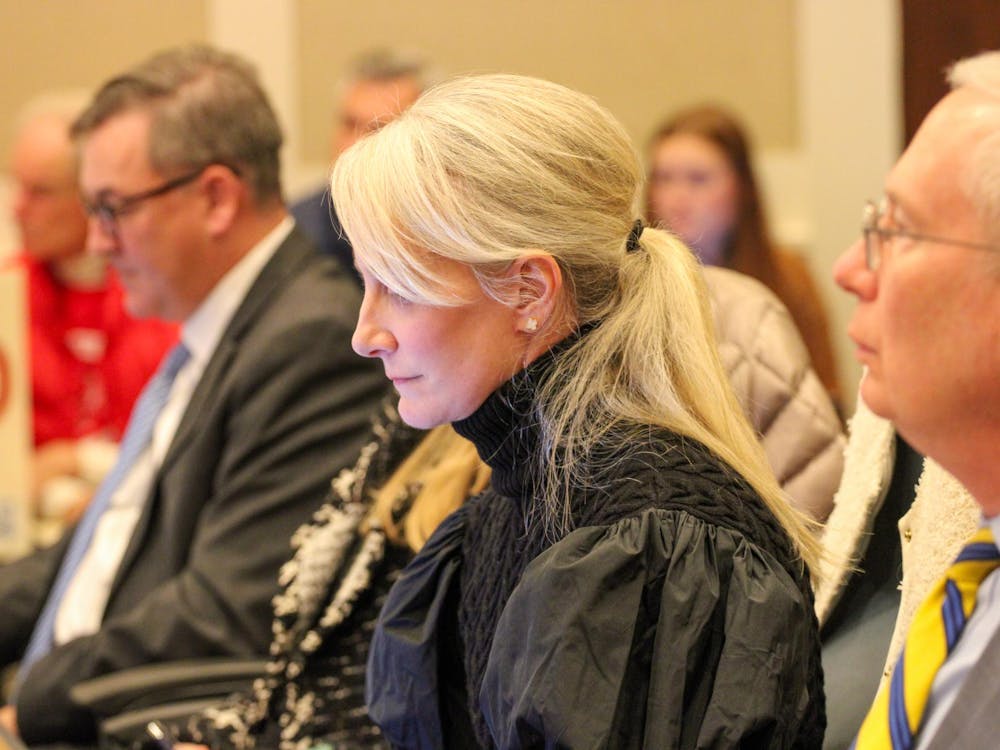Economics majors and faculty members recently expressed their discontent with the condition of Rouss Hall, which was rated the worst building on Grounds in a Facilities Management report released in February 2001.
Though they still are in the planning stages, several members of the economics department are exploring ways to alleviate the declining situation in the growing department.
Their plans include renovating Rouss Hall and constructing a new economics building behind it that would nearly double the existing space allotted for the economics department.
To assist in the designing and planning, economics professors Charles Holt and Kenneth G. Elzinga worked with the architecture firm Barnes, Vanze and Associates.
Elzinga said the firm is a "very prominent architecture firm in the D.C. area," that was responsible for the Commerce School renovations.
The economics department selected the firm partly because of the way the architects preserved the exterior of Monroe Hall while creating a technologically advanced, attractive interior, Elzinga said.
To pay for the consulting work, the Economics department used funds that Elzinga and Holt raised from alumni in Atlanta, totaling almost $80,000.
One of the most important aspects of design was ensuring that the new building would not overshadow Rouss Hall or the other buildings that are historical landmarks on the Lawn, Holt said. Therefore, the new building would be built on a level lower than Rouss Hall so it would not be visible from the Lawn.
Ideally, the two buildings would be connected by an attractive glass atrium, Holt said.
Elzinga said he envisions an "atrium where students could gather, where they could sit and talk," and also where students and faculty could interact.
The goal of the project is to create an environment that is more friendly to faculty-student interaction than Rouss Hall is, Holt said. One of Thomas Jefferson's goals for the University was "to mix students and faculty," he added.
Rouss Hall should be a "place where interaction and collegiality exist," Elzinga agreed.
Another change would be to convert the classroom Rouss 104 back to its original state as an amphitheater classroom with a skylight and stadium seating. In 1948, the room was made smaller to allow another room to be built on the second floor above it.
Changing the classroom back into its original state would make it ideal for instrumental and choral groups to use as a performance space, Holt said. "It would be nice to have a showing space on the Lawn."
Now the largest problem hindering the project is funding.
Holt said he estimates the plans will cost $20 million - $10 million for the Rouss Hall renovation and $10 million for the construction of a new building.
Elzinga said he hopes the administration will allow the economics department to raise money independently of the University.
There is "a sense of frustration as to what to do next," he said, because Rouss Hall is not on the University's list of highest priorities.
Holt suggested the possibility of naming different parts of the building after potential donors. For example, the atrium, new building and amphitheater classroom each could be named after someone.
If the economics department is not permitted to fund raise and the University cannot provide funding for the renovations, Elzinga said that instead of creating a new building, the department may work with the administration to acquire several classrooms in Wilson Hall.






